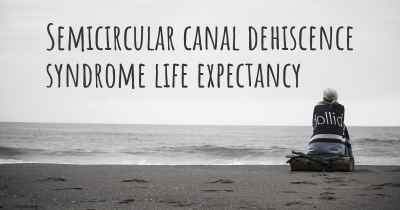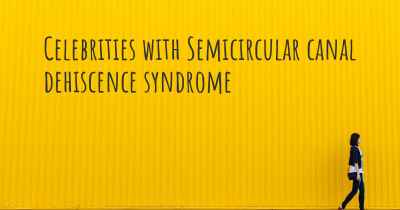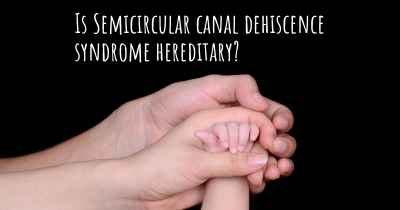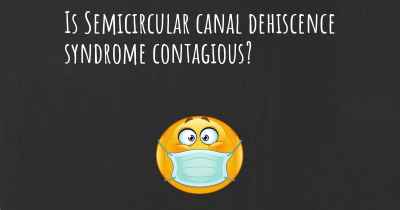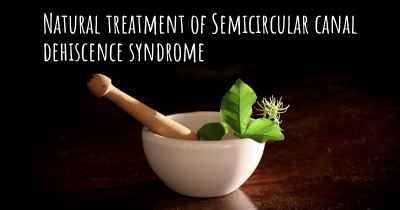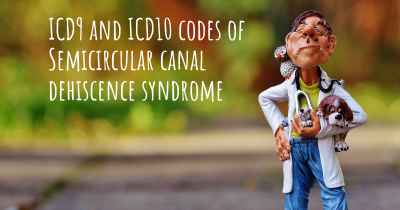Living with Semicircular canal dehiscence syndrome. How to live with Semicircular canal dehiscence syndrome?
Can you be happy living with Semicircular canal dehiscence syndrome? What do you have to do to be happy with Semicircular canal dehiscence syndrome? Living with Semicircular canal dehiscence syndrome can be difficult, but you have to fight to try to be happy. Have a look at things that other people have done to be happy with Semicircular canal dehiscence syndrome
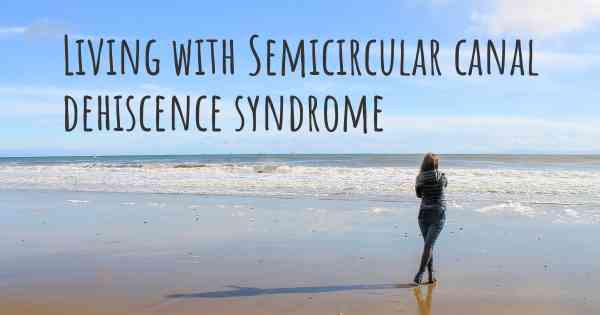
Living with Semicircular Canal Dehiscence Syndrome
Semicircular canal dehiscence syndrome (SCDS) is a rare medical condition that affects the inner ear, specifically the semicircular canals. These canals are responsible for detecting head movements and maintaining balance. When a person has SCDS, a part of the bone that covers the semicircular canals becomes thin or absent, leading to various symptoms such as dizziness, hearing loss, and sensitivity to certain sounds.
Diagnosis and Treatment
If you suspect you have SCDS, it is crucial to consult with a healthcare professional, preferably an otolaryngologist or an ear, nose, and throat specialist. They will conduct a thorough examination, which may include a physical evaluation, hearing tests, and imaging studies such as a CT scan or an MRI. Once diagnosed, your doctor will discuss treatment options with you.
Treatment for SCDS can vary depending on the severity of your symptoms and their impact on your daily life. In some cases, conservative management may be recommended, which involves avoiding triggers that worsen your symptoms, such as loud noises or certain head movements. Your doctor may also suggest vestibular rehabilitation exercises to help improve your balance.
If conservative measures are not effective or if your symptoms are severe, surgical intervention may be considered. The most common surgical procedure for SCDS is called a canal plugging surgery. During this procedure, the affected semicircular canal is sealed to prevent abnormal fluid movement and alleviate symptoms. It is important to discuss the potential risks and benefits of surgery with your doctor before making a decision.
Managing Symptoms
Living with SCDS can be challenging, but there are strategies you can employ to help manage your symptoms and improve your quality of life:
- Avoid triggers: Identify and avoid activities or situations that worsen your symptoms. This may include loud noises, sudden head movements, or activities that cause changes in pressure, such as flying or scuba diving.
- Protect your ears: Use earplugs or earmuffs in noisy environments to reduce sound sensitivity and prevent further damage to your hearing.
- Practice stress management: Stress can exacerbate symptoms, so finding effective stress management techniques such as meditation, deep breathing exercises, or engaging in hobbies can be beneficial.
- Seek support: Connect with support groups or online communities where you can share experiences, gain insights, and find emotional support from others who are living with SCDS.
- Communicate with others: Inform your family, friends, and coworkers about your condition so they can better understand and support you. Educating those around you about SCDS can help create a more accommodating environment.
- Follow your treatment plan: Whether you opt for conservative management or undergo surgery, it is essential to follow your doctor's recommendations and attend regular check-ups to monitor your condition and make any necessary adjustments to your treatment plan.
Conclusion
Living with Semicircular Canal Dehiscence Syndrome can be challenging, but with proper diagnosis, treatment, and management strategies, you can lead a fulfilling life. Remember to consult with healthcare professionals, follow their advice, and seek support from others who understand your condition. By taking proactive steps to manage your symptoms, you can minimize their impact and maximize your overall well-being.
